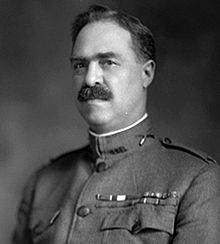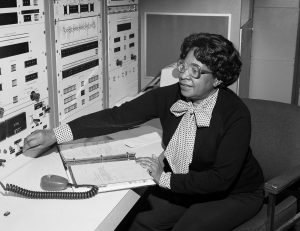General John Henry Parker is best known for his role as the commander of the Gatling Gun detachment during the Spanish-American War. In early 1898, then Lieutenant Parker, a recent graduate of the United States Military Academy, was placed in charge of training soldiers in the use of machine guns. His detachment was a dumping ground for soldiers not fit to serve in other areas, and at that time, the idea of using machine guns in battle was of little value to the US Army. However, Parker believed machine guns could play a vital role in battle.1
In this time period, large artillery had to be transported by draft animals. This was not always a feasible possibility given the terrain, the time frame, and the fact that animals could be killed by enemy fire. Lt. Parker was able to see the purpose of machine guns as a replacement for artillery in battle, especially at ranges closer than 1500 yards.2 He petitioned the US Army for a chance to build a machine gun detachment that could be used for offensive battle tactics, and was granted permission to put a unit together shortly before being sent to Cuba during the Spanish-American War.

Lt. Parker was given four brand new 1895 Gatling guns of .30 caliber. The Gatling gun works by gravity feeding bullets into the top and dropping shells out the bottom, while the shaft was turned by a hand-crank. The gun’s swivel mount and rapid fire allowed the shooter to aim and shoot over long distances of up to 2000 yards, protecting the shooter from enemy fire by artillery. The only disadvantage of the Gatling gun, aside from a lack of training on the weapon, was that it was prone to jamming.3
At the start of the Spanish-American War, Lt. Parker and his Gatling Gun Detachment were assigned to the 5th Army Corps. It would be the first time the US Army would use machine guns as an offensive weapon during battle. On July 1, 1898, the Battle of San Juan Hill began early in the morning. Theodore Roosevelt’s Rough Riders and the Buffalo Soldiers of the 10th Calvary and the 24th Infantry Regiments were attempting to take San Juan Hill and Kettle Hill. The US Army was off to an early loss on that first day of the battle. It was not until the afternoon, when Lt. Parker positioned his Gatling guns and opened fire, that the battle went in favor of the US Army.4 The US artillery used black powder and the Spanish Army used smokeless powder, allowing the Spanish Army to see and fire upon the US artillery. The Gatling guns, however, were smokeless.5
Lt. Parker was ordered to move his guns as close to the battle as he could. He moved them to El Poso, the southern end of the area, where they could attack a blockhouse, the trenches, and the barbed wire entanglements of the Spanish Army. For eight-and-a-half minutes the Gatling guns fired continuously upon the Spanish, causing the soldiers to flee the trenches in an attempt to reach safety. Teddy Roosevelt is known to have said that the sound of the Gatling guns “was most inspiring” to the US soldiers. The Gatling guns were re-positioned, and they fended off the Spanish counterattack.6 Parker’s soldiers and the Gatling guns were with the US soldiers during the entire siege, even down in the trenches.7

Although the US lost three times the number of soldiers as the Spanish, supporting fire from the Gatling guns was crucial to the success of the Battle of San Juan. The artillery were only able to shoot about 270 fragments, while the Gatling guns were able to shoot with precision about 1000 shots.8 For the first time in history, machine guns were used offensively in a battle and were able to successfully disable an opposing army’s artillery. Spanish Army General Jose Toral said in his official report that the Gatling guns and their fire power was a major reason for the Spanish surrender.9
Lt. Parker was awarded the Silver Star for gallantry in action and was eventually promoted to general. He continued his military career by training other armies in Europe in the use of machine guns in warfare. Prior to the Spanish-American War, Parker believed that using machine guns in close battle would allow troops to advance under the protection of the machine guns, harming the enemy and improving the morale of US soldiers. This value of the machine gun had been proven.10
- John H. Parker, History of the Gatling Gun Detachment Fifth Army Corps, at Santiago (Kansas City, MO: Hudson-Kimberly Publishing Co, 1898), 14, 18-25. ↵
- John H. Parker, History of the Gatling Gun Detachment Fifth Army Corps, at Santiago (Kansas City, MO: Hudson-Kimberly Publishing Co, 1898), 62. ↵
- John H. Parker, History of the Gatling Gun Detachment Fifth Army Corps, at Santiago (Kansas City, MO: Hudson-Kimberly Publishing Co, 1898), 18-19, 27-28. ↵
- John H. Parker, History of the Gatling Gun Detachment Fifth Army Corps, at Santiago (Kansas City, MO: Hudson-Kimberly Publishing Co, 1898), 11. ↵
- Encyclopedia Britannica, January 2012, s.v. “Machine Gun.” ↵
- John H. Parker, History of the Gatling Gun Detachment Fifth Army Corps, at Santiago (Kansas City, MO: Hudson-Kimberly Publishing Co, 1898), 72-93. ↵
- John H. Parker, History of the Gatling Gun Detachment Fifth Army Corps, at Santiago (Kansas City, MO: Hudson-Kimberly Publishing Co, 1898), 11-12. ↵
- John H. Parker, History of the Gatling Gun Detachment Fifth Army Corps, at Santiago (Kansas City, MO: Hudson-Kimberly Publishing Co, 1898), 103. ↵
- “Old Glory to Wave over Santiago Today,” Chicago Tribune, (Chicago, IL), Jul. 17, 1898. ↵
- John H. Parker, History of the Gatling Gun Detachment Fifth Army Corps, at Santiago (Kansas City, MO: Hudson-Kimberly Publishing Co, 1898), 12. ↵



56 comments
Marissa Rendon
This was a pretty interesting article to read. I was a bit confused when I read that machine guns weren’t really considered to be valuable back then, I feel as of now machine guns are definitely valuable, you would think they would be just as valuable back then. I think it was very cool to read about the study and practice it took them to create such a powerful weapon that’ll help them to our advantage. Excellent article!
Danielle Sanchez
General Parker believed machine guns could play a vital role in battle was an introduction that drew me in. John Henry Parker is known for being the commander in Gatling Gun detachment during the Spanish-American war. This type of artillery had to be transported by draft animals. Parker was given four Gatling guns which worked by gravity feeding bullets into the top and dropping shells from the bottom. During the Battle of San Juan Hill Parker positioned his guns and opened fire. Using black powder which was smokeless. Great article!
Clarissa Liscano
Amazing and intriguing article. I was shocked to learn that machine guns were not considered to be very valuable at the time and that the significance of the Gatling Gun wasn’t really realized until it was used in the Spanish-American War. General Parker truly thought that ARs served as the first line of defense. As a result, machine guns were embraced by the government, modified upon, and are now widely utilized in modern society.
Alexa Casares
I enjoyed just how much information was displayed in this article! To the point and amazing!
Andrick Ferrer
Tyler Sleeter does a great job of bringing attention to one of the most influential moments in American warfare. I enjoyed reading this article because although it is a shorter one, it is concise and straight to the point. Every paragraph and picture compliment the importance of this event in history.
Veronica Lopez
Great article! Although the article was short, it gave me loads of information. I’m currently viewing a chapter in my history class that covers the Battle of San Juan. You gave me extra information to better understand it. By the way, I love the way you’ve positioned your two historical pictures. It really complimented the paragraphs right next to them and it gave life to your article.
Andrew Molina
I found this article to be extremely interesting and very fun to read, especially for someone who loves reading about wars in past history. I felt this was very detailed in a way that’s super easy to follow and understand. I never really thought about the contributions towards weaponry and tactics that this man made, its extrodanary. Its so cool to learn that they figured out to use this weapon to our advantage in a major conflict and show too the rest of the world its effectiveness, its crazy how much technology boomed in such a short period of time, all in all, I really enjoyed this article and read more of what this author has to write.
Maria Jose Haile
After reading this article I found the whole reason that Genera Parker wanted the machine guns was because he wanted to get rid of draft animal which would bring artillery. This is because of his reasoning is very fraud because he thought that animals could be killed by the enemy however, it is the same thing with machine guns. I enjoyed this article however, even though the logic was there.
Phylisha Liscano
Hello Tyler, this was a very interesting article that provided lots of details. Learning about when the machine guns were introduced was very interesting. I had no prior knowledge to who Lt. Parker was and your article had the right amount of information. Overall, excellent article.
Natalia Ramirez
This is a great informative article! General Parker is an important historical figure that played a vital role in incorporating the use of machine guns. I like the image you included of the Gatling Guns deployed outside Santiago, Cuba. It gives the readers a clear image of what the Gatling Gun looked like. Moreover, an interesting fact I found in your article was that large artillery was transported by draft animals. This is something I did not know.